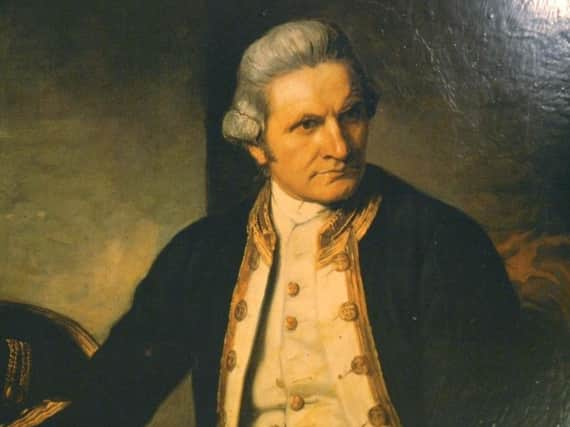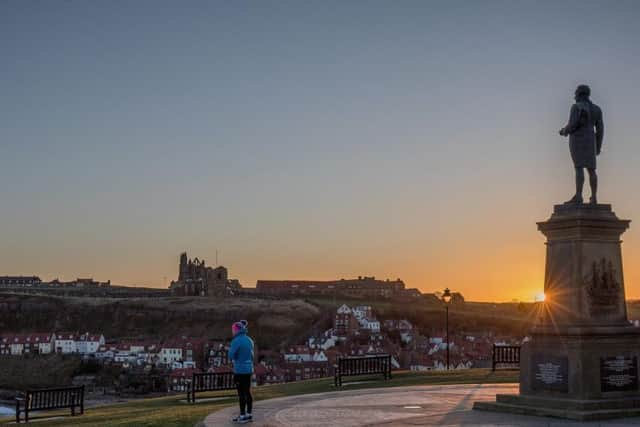Captain Cook: Everything you need to know about Yorkshire's renowned navigator


Cook first joined the British merchant navy as a teenager, before joining the Royal Navy in 1755, later being promoted to the rank of Captain, which is where the alliterative name of Captain Cook stuck.
In 1762, shortly before his first voyage, Cook married Elizabeth Batts, whom he had six children with. Although Cook lived in the East End of London when not at sea, he unfortunately did not get to see his children frequently as he spent a lot of his life away at sea for years at a time.
Advertisement
Hide AdAdvertisement
Hide AdHis second-born son, Nathaniel, was lost aboard HMS Thunderer during a hurricane in the West Indies, his only daughter, Elizabeth, died as an infant, Joseph and George both died shortly after their birth, and Hugh died of scarlet fever while a student at Christ's College, Cambridge. His eldest child, James, lived into his very early 30s before sadly dying.


Cook has no direct descendants, as all of his children died before having children of their own.
Cook’s Career
Cook had a long and prosperous career and it was his contribution to the Seven Years' War and his thorough and detailed surveying and mapping of the entrance to the Saint Lawrence River during the siege of Quebec, which in particular brought Cook to the attention of the Admiralty and Royal Society.
Cook’s achievements in mapping the Pacific, New Zealand and Australia aided in radically changing western perceptions of world geography and as he was one of a rare number of men in the 18th century navy to rise through the ranks, he was sympathetic to the needs of ordinary sailors, making him popular amongst his crew.


Advertisement
Hide AdAdvertisement
Hide AdThe significant achievements of Cook subsequently had a crucial effect on his life and career, as it steered him in the direction of British exploration overseas, which then led to his 1766 commission as commander of HM Bark Endeavour for the first of three Pacific voyages.
The First Voyage
Cook’s first voyage, from 1768 - 1771, had the purpose of seeing Venus pass in front of the Sun, a rare event which was visible only in the southern hemisphere. Cook and his crew were sent by the British Government to observe and record this transit.
However, there was a secret intention behind this expedition, as the crew were also there to search for the rumoured southern continent.
Cook was chosen as commander of HMS Endeavour, which was built in the seaside location of Whitby, a place which continuously celebrates the achievements of Cook and a full-sized replica of HMS Endeavour is currently in the process of being moved back to Whitby harbour.
Advertisement
Hide AdAdvertisement
Hide AdHMS Endeavour arrived in Tahiti in April 1769, astronomer Charles Green was able to observe the transit of Venus, before Endeavour continued on to New Zealand and then sailed along Australia's eastern coast.
This stretch of terrain had never before been seen by Europeans and Cook then claimed it for Britain and named it New South Wales, before returning home in July 1771.
The Second Voyage
The second voyage that Cook was a part of took place from 1772-1775, just after Cook had been promoted to the rank of Commander in 1771. Cook again set out to look for the southern continent, where his two ships sailed close to the Antarctic coast, but were unfortunately forced to turn back home due to the cold weather.
It was during this voyage that Cook Cook swept across the South Atlantic from Cape Horn and whilst doing this he surveyed, mapped and took possession of South Georgia for Britain. Cook and his crew also visited New Zealand and Tahiti before returning back to England in 1775.
The Third Voyage
Advertisement
Hide AdAdvertisement
Hide AdCook’s third and final expedition, in the years 1776-1779, saw the navigator set out to find the North-West Passage, which was believed to link the Atlantic and Pacific oceans together.
After he was unable to find the rumoured route, Cook took his two ships south and explored the island of Hawaii.
Cook and his boat left again to resume his exploration of the North Pacific, but they shortly had to turn back to the island of Kealakekua Bay on ‘Hawaiian Island’ after the foremast of one of the ships encountered damage.
However, the relationship between the islanders and Cook’s crew became sour after a theft of one of Cook’s small boats.
Advertisement
Hide AdAdvertisement
Hide AdTensions continued to rise and Cook decided to take hostage of the island’s King, which unfortunately led to his untimely death as a member of the village stabbed and killed Cook on February 14.
The present day
Cook became widely known for his efforts and achievements during the 18th century and his name and history continued, and still continues, to be perpetuated, even to this very day.
Today, Cook is celebrated for his voyages to the Pacific, as his 12 years sailing around the Pacific Ocean aided in the contribution of unknown knowledge of the area to Europe.
Several islands, including the Sandwich Islands in Hawaii were encountered for the first time by Europeans, and his accurate navigational charting and mapping of large areas of the Pacific was a major achievement in his time.
Advertisement
Hide AdAdvertisement
Hide AdCook also made a major and unusual achievement of his time by succeeding in circumnavigating the world on his first voyage without losing a single man to scurvy.
Cook became known both in the UK and internationally and his name is perpetuated both in the region he grew up in and in Whitby.
This year marks the 250th anniversary of Cook’s voyage and Whitby especially will be holding events to celebrate Cook’s life and achievements.
Captain Cook conquered many feats whilst out at sea and his efforts made major contributions to the world of navigation and mapping. His name and history continues to be perpetuated around the globe, and will continue to do so for many years to come.